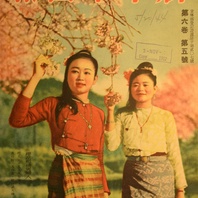
Item
Xin Zhonghua huabao (New China Pictorial) cover, May 1944
This cover image from the Xin Zhonghua huabao (New China Pictorial) 6.5 (May 1944) shows a photograph of two unnamed Burmese women. The New China Pictorial was a bilingual (Chinese-English) magazine published from 1939 through 1944 in Shanghai by the occupation journalist Wu Linzhi for distribution in China and throughout Southeast Asia. This magazine employed cover images of women from areas of Southeast Asia that had been conquered by Japan with increasing regularity over the course of 1943 and 1944, having previously focused on Chinese film celebrities.
Read More
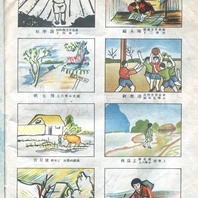
Item
Ertong zuopin (works by children), II
This is a selection of images (most being pencil drawings) contributed to the magazine Ertong huakan (Children’s Pictorial) 9.10 (April 1941) by readers. The images offer a fascinating insight into the ways in which official ideas about the appearance of occupied China were reflected in the artwork of Chinese school children living in the RNG capital. Note the references to dawn, for example, the depictions of Japanese people, and the idyllic images of the Chinese countryside included in some of the drawings. Basketball remained a politically acceptable sport in occupied Nanjing despite its American provenance.
Read More
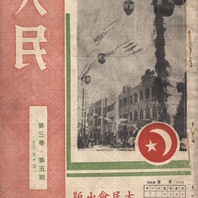
Item
Damin cover image, May 1940
This is the cover image of the magazine Damin 3.3 (May 1940), published by the Daminhui (Great People’s Association) in Nanjing. The Daminhui was a propaganda and mobilization organization established by the Japanese in 1938, which was later folded into Wang Jingwei’s Kuomintang (Nationalist Party). The Daminhui specialised in public expressions of support for the occupation, and employed a staff of Chinese organisers, artists, and writers. The sun-and-moon logo of the Daminhui can be seen on this magazine’s cover.
Read More
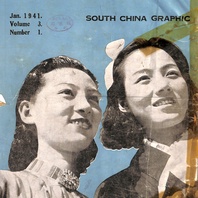
Item
Huanan huabao (South China Graphic) cover, January 1941
This cover image is taken from Huanan huabao (South China graphic) 3.1 (January 1941). The staged photograph deploys one of the standard tropes of Japanese propaganda in occupied China, i.e., that of a Japanese woman and Chinese woman fraternising with each other. This trope was derived from Manchukuo propaganda and the notion of “gozoku kyōwa” (“the harmony of the five races”), as well as attempts to feminise the image of an occupied China. Note how the Japanese woman is pictured as being slightly higher than her Chinese peer.
Read More
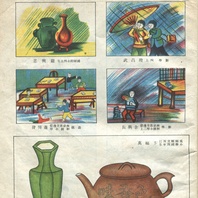
Item
Ertong zuopin (works by children), I
This is a selection of images (most being pencil drawings) contributed to the magazine Ertong huakan (Children’s Pictorial) 9.10 (April 1941) by readers. The images offer a fascinating insight into the ways in which official ideas about perceived notions of student behaviour in occupied China were reflected in the artwork of Chinese school children living in the RNG capital. Two of the drawings in this selection, for example, relate to the hardships of studying (in difficult weather, poor light, etc), while one depicts children playing in a classroom.
Read More
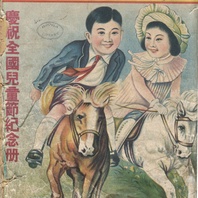
Item
Qiantu wuliang (An immeasurable future)
Cover of a magazine which was published in Nanjing for children themselves during the Japanese occupation. The artist who created this image is not named. Publication details are: Ertong huakan (Children’s Pictorial) 9.10 (April 1941): cover image
Read More
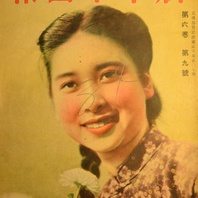
Item
Xin Zhonghua huabao (New China Pictorial) cover, September 1944
This cover image from the Xin Zhonghua huabao (New China Pictorial) 6.9 (September 1944) shows Chen Juanjuan. Chen was a film celebrity active in wartime Shanghai. The New China Pictorial was a bilingual (Chinese-English) magazine published from 1939 through 1944 in Shanghai by the occupation journalist Wu Linzhi for distribution in China and throughout Southeast Asia.
Read More
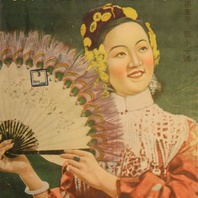
Item
Xin Zhonghua huabao (New China Pictorial) cover, November 1943
This cover image from the Xin Zhonghua huabao (New China Pictorial) 5.11 (November 1943) shows an unattributed painting of the Beijing opera actress Huang Yuhua. Huang starred in Pansi dong (The Cave of the silken web), an opera film produced by the North China Film Company (Huabei Dianying Gongsi) in 1943. The image used here is from promotional material relating to that film. The New China Pictorial was a bilingual (Chinese-English) magazine published from 1939 through 1944 in Shanghai by the occupation journalist Wu Linzhi for distribution in China and throughout Southeast Asia.
Read More
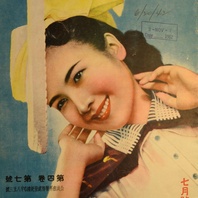
Item
Xin Zhonghua huabao (New China Pictorial) cover, July 1942
This cover image from the Xin Zhonghua huabao (New China Pictorial) 4.7 (July 1942) shows Nancy Chan (Chen Yunshang). Chan was one of the most popular film celebrities in wartime Shanghai, and was favoured by the occupation regime in pro-government media, despite emulating Hollywood stars in terms of her dress and public image. The New China Pictorial was a bilingual (Chinese-English) published from 1939 through 1944 in Shanghai by the occupation journalist Wu Linzhi for distribution in China and throughout Southeast Asia.
Read More
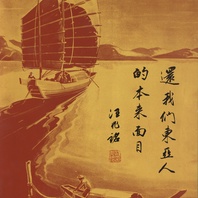
Item
Huan women Dong Ya ren benlai de mianmu (Restore to we East Asians our original countenance)
This unattributed print was produced in a special 1941 booklet commemorating Wang Jingwei’s visit to Japan in June of that year. The phrase “Huan wo Dong Ya ren benlai de mianmu” (Restore to we East Asians our original countenance) is a deliberate play on the expression “Huan wo heshan” (Return to us the rivers and mountains). The latter was probably the single most commonly used phrase in the wartime propaganda of the resistance. The print is taken from Huang Qingshu (ed), Wang zhuxi fang Ri jinian huakan (Special pictorial in commemoration of Chairman Wang’s visit to Japan) (Nanjing: Xuanchuanbu, 1941).
Read More
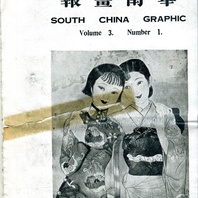
Item
Huanan huabao (South China Graphic) inside cover, January 1941
This image is taken from Huanan huabao (South China graphic) 3.1 (January 1941). The illustration deploys one of the standard tropes of Japanese propaganda in occupied China, i.e., that of a Japanese woman and Chinese woman fraternising with each other. This trope was derived from Manchukuo propaganda and the notion of “gozoku kyōwa” (“the harmony of the five races”), as well as attempts to feminise the image of an occupied China. Note how the Japanese woman is pictured as being slightly higher than her Chinese peer.
Read More
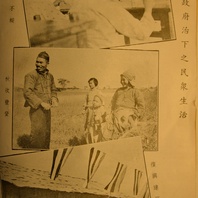
Item
Weixin zhengfu zhixia zhi minzhong shenghuo (The life of the masses under the Reformed Government)
This series of unattributed photographs is taken from the Daminhui publication Xin Zhongguo (New China) 3.1 (January 1940). They are used here to present scenes of life under the rule of the Reformed Government (Weixin zhengfu), or RGROC, which was a “client regime” established in 1938. The RGROC was eventually amalgamated with Wang Jingwei’s RNG in March 1940. The top image is entitled “xian’ge bu chuo” (“studying never stops, even in times of strife”); the middle image is entitled “qiu shou fengdeng” (gathering the autumn harvest); the image at the bottom of the page is entitled “fuxing jianzhu” (renovating buildings). All three are typical images of the sort that the Daminhui promoted in the period between 1938 and 1940, but also display a clear influence from Manchukuo propaganda photography from earlier in the 1930s.